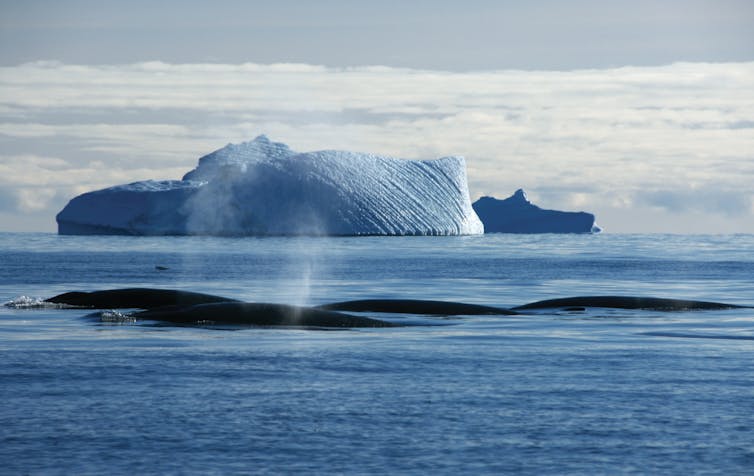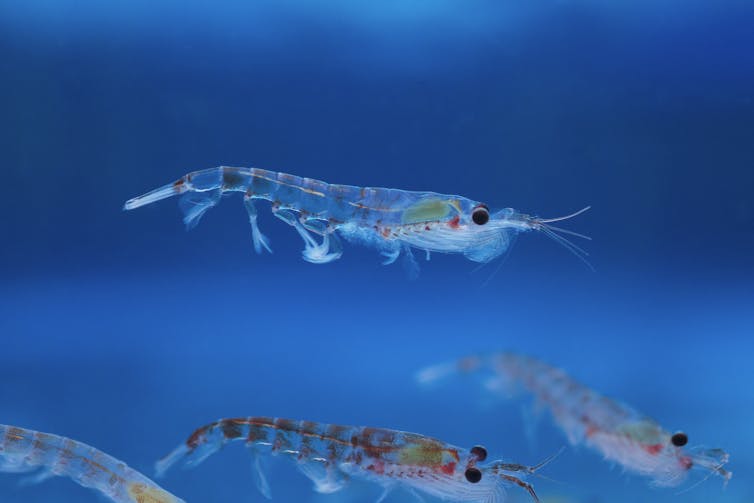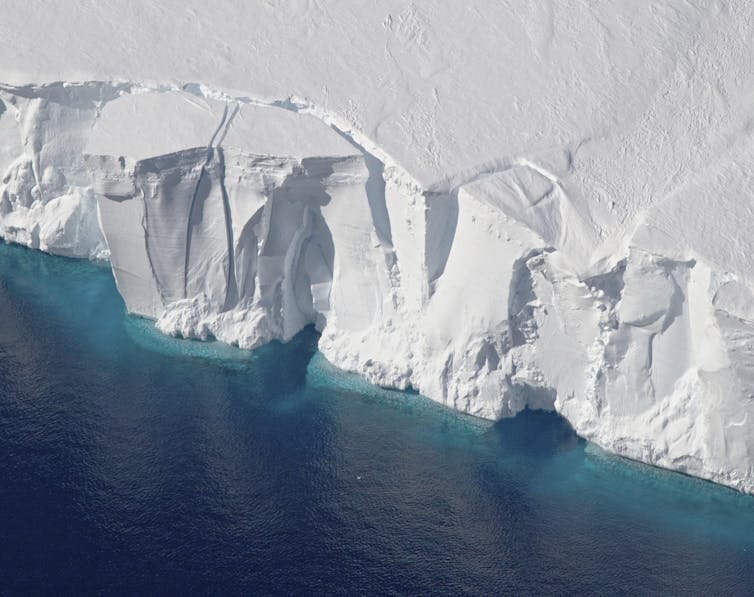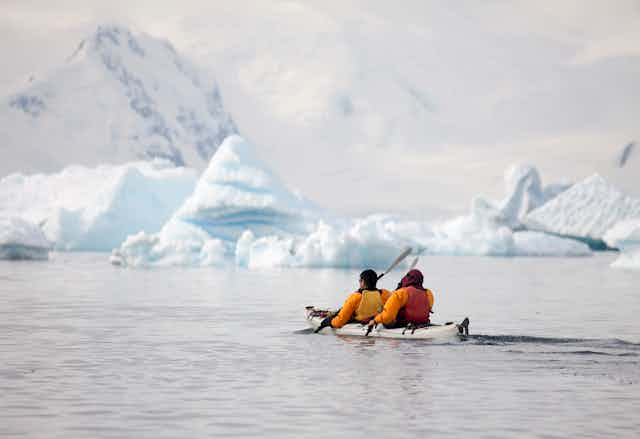All humanity benefits from Antarctica and the Southern Ocean that surrounds it. To some, these benefits may seem priceless. But in our market-driven world, calculating the economic value of the environment can be a useful tool in garnering support for its protection.
That was the intention of our new research. We crunched the numbers on the value of services Antarctica and the Southern Ocean provide in terms of fisheries, tourism and various natural processes that support Earth’s functioning.
And the result? We calculate the economic value at a whopping US$180 billion (A$276 billion) each year. We hope our findings will help prioritise conservation actions in Antarctica and galvanise international support to protect the region from the ravages of climate change.

Benefits seen, and unseen
The many benefits nature provides to humans are known as “ecosystem services”.
Some services provided by Antarctica and the Southern Ocean are invisible to most people. For example, the Southern Ocean absorbs carbon dioxide (CO₂) from the atmosphere, and ice in the region reflects heat. These processes help regulate Earth’s climate
The Southern Ocean also helps transport water around the globe, which helps distribute heat, fresh water, carbon and nutrients. These are known as “regulating” services.
We can think about the value of these services in terms of the cost that would accrue if it was not provided. For example, the Antarctic ice sheet contains 30 million cubic kilometres of ice. If that ice melted as a result of global warming, the effects on coastal communities around the world would be catastrophic.
Other benefits provided by the Antarctic region are more visible. For example, humans rely on toothfish and krill for food, pharmaceuticals and dietary supplements. A warmer and more acidic Southern Ocean would affect fish stocks – both in the region and elsewhere – and some species may become extinct.
The Antarctic region also provides cultural services such as hosting vital scientific research. And in recent years, Antarctica has experienced a surge in tourist numbers.
So how much are these services actually worth to humanity? Our research examined that question.

Crunching the numbers
We used various methods to estimate the value of each service. Some, such as the provision of food, can be easily calculated by looking at what the market is willing to pay. Others, such as the avoidance of harm due to CO₂ absorption, are more complicated to ascribe value to.
Let’s start with tourism. Visitor numbers to Antarctica – mostly by ship – have increased markedly in recent decades, from about 8,000 a year in 1993–1994 to 105,000 in 2022–2023. We estimate the annual value of the Antarctic tourism industry at about US$820 million.
And what about the benefits of fisheries? Considering the tonnes of toothfish and krill caught in the region, we estimate the value at about US$370 million per year.
Finally, we estimated the economic value of “regulating services” such as carbon storage, sea level regulation and light reflection. We did this by multiplying estimates of the value of carbon stored in the Southern Ocean by estimates of the social cost of carbon.
This was a complex calculation, which we explain in greater detail in our paper. Overall, we estimate the value of the region’s regulating services at about US$179.3 billion a year.
All up, this brings the total value of Antarctica and the Southern Ocean’s ecosystem services to about US$180 billion a year. This is a conservative estimate which excludes some ecosystem services.
For example, the Antarctic Circumpolar Current and neighbouring ocean gyres – which distribute Antarctic nutrients around the world – are thought to help boost the value of global fisheries by about US$2.8 billion. We did not include this in the calculation above to avoid double-counting with other regulating services.
And due to a lack of data, we could not even roughly estimate the value of scientific work in Antarctica, so this is also excluded. But Antarctic research may have prevented significant damage to livelihoods and infrastructure across the world – for example, by monitoring changes in ice and sea levels – and we can expect this contribution to increase in future.
And the region provides other important services that we don’t have enough information to estimate, such as medicinal ingredients yet to be discovered.

What role for the Antarctic Treaty?
As the Southern Ocean becomes warmer and more acidic, its natural systems will undergo huge changes. This will reduce the many benefits the Antarctic region provides, at great cost to the world. So how should the global community respond?
The Antarctic and Southern Ocean is governed by the Antarctic Treaty, which was adopted in 1959. The threats we’ve outlined were not anticipated at the time, and the treaty does not address them.
Treaty parties have the authority to safeguard some ecosystem services, such as tourism, fishing and science. But are unable to effectively safeguard others, such as regulating services when the threat comes from outside the Antartctic area.
The treaty has evolved over the years. Now it must go further, to safeguard the huge benefits – economic and otherwise – the region provides to the world.
Read more: The Antarctic Treaty is turning 60 years old. In a changed world, is it still fit for purpose?

